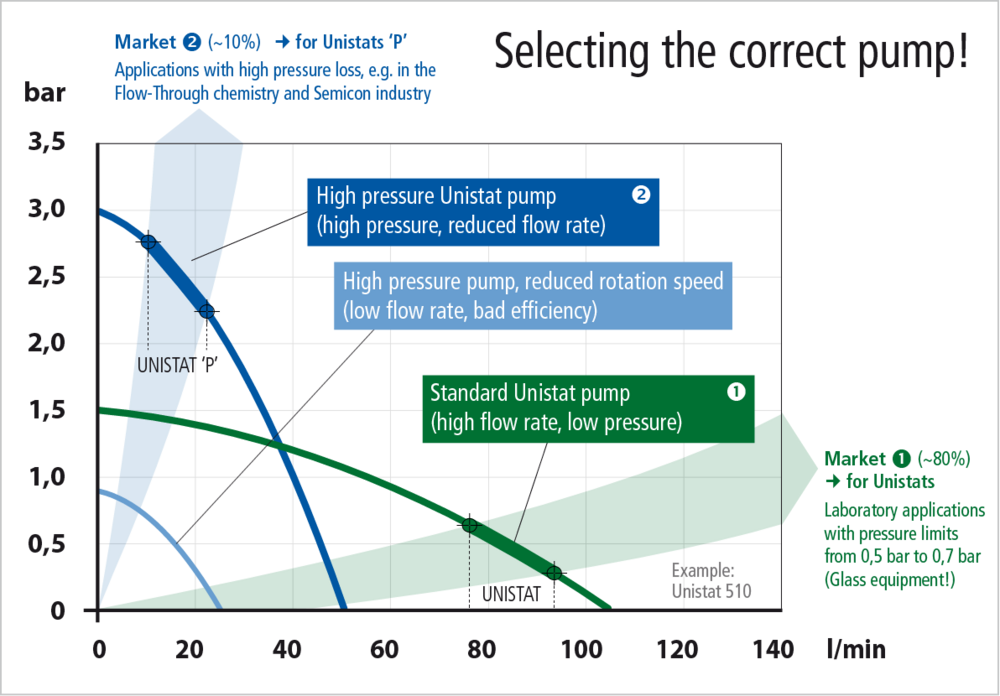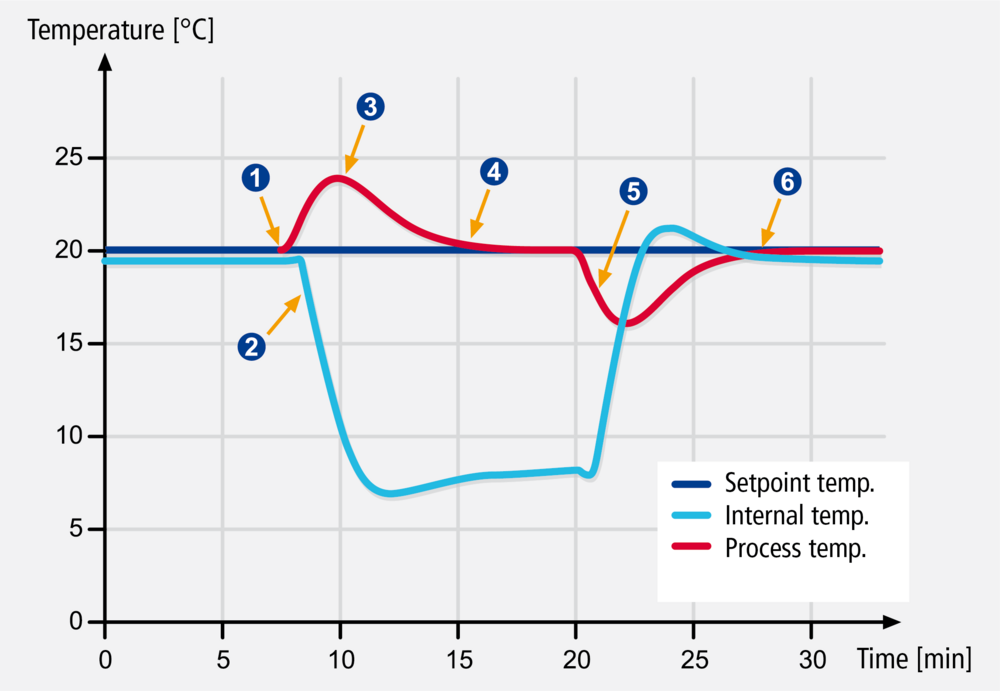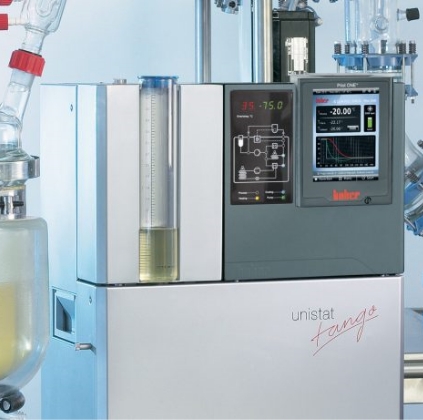Efficient heat transfer with Unistats
Power is not the same as efficiency
It is essential for the user to be able to make meaningful comparisons. DIN 12876 defines various characteristics and measurement methods for this purpose. These should be used as an orientation for heating circulators and cryostats. Characteristics recorded in this manner facilitate a reliable comparison of the performance.
There are two types of temperature control devices on the market. Along with open bath circulators, closed temperature control systems are also available, sometimes referred to as process control circulators. The latter device class originated more than 25 years ago with the “Unistat Tango”. The Unistat Tango concept, which was completely new back then, created a huge technolo- gical advance in temperature cont- rol. In contrast to conventional bath circulators, for the very first time the “Unistat Tango” worked with a closed temperature control circuit. Unistats are circulators thermostats without an internal bath. An expansion tank replaces the conventional bath to accommodate thermal expansion and this is where the volume ch- ange takes place. The mass to be thermoregulated is reduced which in turn increases the speed of tem- perature change. These properties make Unistats predestined for tem- perature control tasks in process technology and process engineering such as in reactors, autoclaves, mi- niplant/pilot plants, reaction blocks and calorimeters.
When considering the question of the dynamics of a temperature control device, the heating or cooling capacity (kW) is normally used as a comparative value. The power generated in the thermostats however is not sufficient for making a meaningful assessment. The system mass which has to be thermoregulated must be considered. That is why to make a meaningful comparison the cooling power density (watts/liters) as per DIN 12876 is most suitable. Always applicable: the greater the cooling power density, the more dynamic (faster) the thermostat can react to a temperature-change requirement.
Consider two temperature control devices from different suppliers. The cooling capacity of both devices is the same; likewise, the pump flowrate (l/min) and both temperature control devices are connected to identical applications (e.g. glass reactors). To be able to make a statement on the dynamics (cool-down/heat-up time), we can use the following for- mula:
P = m * c *dT/dt
(P = Power; m = Total mass; c = Spec. heating capacity; dT = Temperature difference; dt = time)
Rearranged for the cooling time dt:
dt = m * c * dT/P
The expression c * dT/P is the same for both applications. However, it’s worth taking a closer look at the mass.
Temperature-control device 1 has a mass of 5 kilograms (fill volume, not the inherent weight of the device). Temperature-control device 2 has a mass of 10 kg. The mass of the eternal applications amounts to 5 kg. The first case results in a total mass of 10 kg (internal filling volume plus the external application); in the second case 15 kg have to be cooled (or heated). The ratio is 2:3, or in other words: Temperature control device 1 is only needed 2/3 of the time. That means the time saving is 33 %.
The example demonstrates that the cooling capacity is certainly an important factor. However, this should also be applied to the temperature control fluid volume being used. The result is the cooling capacity density and this can be used to make a meaningful comparison (see DIN).

The flow rate of the circulation pump is another important criterion. It has a strong influence on the heat transfer between a circulator and the temperature control fluid. According to DIN, the cooling capacity should be measured at full pump output. When the pump output is reduced, the heat transfer is lower. This leads to more net cooling capacity and facilitates lower temperatures. Important for most applications is not the pressure output (bar) but the highest possible flowrate (l/min). The point is ultimately not how much power a thermostat generates; rather it is the efficiency of the heat transfer to or from the process. Output is useless if it is not efficiently transferred to the application.
Circulation pumps are ideally designed so that a turbulent flow generates a large heat transfer coefficients (alpha value) and thus efficient heat transfer to/from the internal heat exchangers (evaporator and heating). In practice, in 90% of all applications glass is used (reactors, distillation apparatus, etc.) and the permissible system pressure in these applications is maximum 0.5 bar. This is why Unistat pumps offer large circulation volumes instead of high pressure, they need significantly less (pumping) motor output to accomplish high flowrates.

The installation and the setup of the total system is often considered as something that is almost incidental. There are numerous aspects which have a direct influence on the tempering capacity. An example of this is that the quality and consistency of the temperature-control hoses has a direct effect on the achievable outputs. We offer metal hoses with smooth inner walls. These hoses im- prove the flow characteristics and thus the heat transfer – which results in considerable time savings when heating or cooling. Additional points with negative effects are restrictions at hose connections, unnecessarily long hoses or small cross-sections of the hoses or hose adaptors.
Case studies are often helpful as sources of information for procurement decisions. In case studies, heating and cooling processes are documented and typical scenarios such as the control response during an exotherm are demonstrated. Case studies facilitate reliable predictions as to whether the temperature control device is suitable for the planned purpose.
Summary
When selecting a circulator there are several points that need to be considered. Ultimately, it is not only the heating and cooling capacities stated in the manufacturer’s catalog that are relevant – rather criteria such as the cooling density, flowrate, and if available case studies should be paramount since that is the only way to be able to make a realistic assessment of the heat transfer efficiency.


